So the Industrious Mr Bugg and I actually had two outings this week, in abject denial of the season and the bare fact that there really isn’t much at all to chase, photographically. Thus this is more proof of making the effort, and not something that’s gonna rock anyone’s world. Right now we’re going to deal with only the first outing back on Tuesday, down to Jordan Lake.
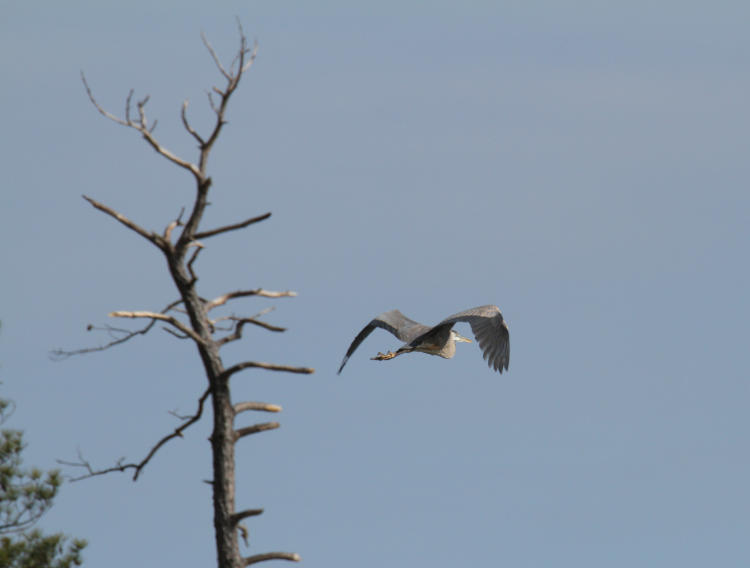
The admittedly-loose goals for this one were to see what kind of wildlife might be showing itself (not too much) and to be present for sunset, which we’ll examine shortly. And aside from a tiny handful of songbirds and seagulls, the wildlife was practically nonexistent. Above, a great blue heron (Ardea herodias) cruised past a tree that should look familiar, almost as soon as we’d arrived, and made itself scarce thereafter. A lot of hiking along the shoreline didn’t turn up much else, though another heron was spooked by something in the distance and almost overflew us, semi-obscured by bare trees and croaking unhappily. We spent some time examining the shore where it had originated to see what caused the alarm but failed to find anything. On the return trip, at least a sailboat was cruising across the lake and I attempted to use what foreground was available to at least shoot something, and happened to catch a photobomber.

I wasn’t really expecting to see any bald eagles (Haliaeetus leucocephalus) at this time of year so I was pleasantly surprised, also finding it curious that the bird was skimming the surface in this manner, which I’ve never seen an eagle do, but then again, my experience with eagles is not exactly comprehensive. I tracked it until it disappeared beyond a point on the opposite shore and never saw any signs again, even though (now encouraged) I scanned as many trees as were within view of the long lens to see if anyone was perching nearby. Still, nesting season for this area should start soon, so here’s hoping I can locate something within relatively easy sight.
Finding little else, I got out the 10-24mm lens and did an overhead shot in a small clearing in a weak attempt to be fartsy. Seriously, there wasn’t anything else to shoot.

At least the sky was a nice clear blue, which would have made it very nice for photographing birds – had there been any to see.
While we waited out the sunset conditions, I was reminded of a pic from last year and had Buggato pose alongside a post for comparison. This is from Tuesday, when the lake levels were about average.
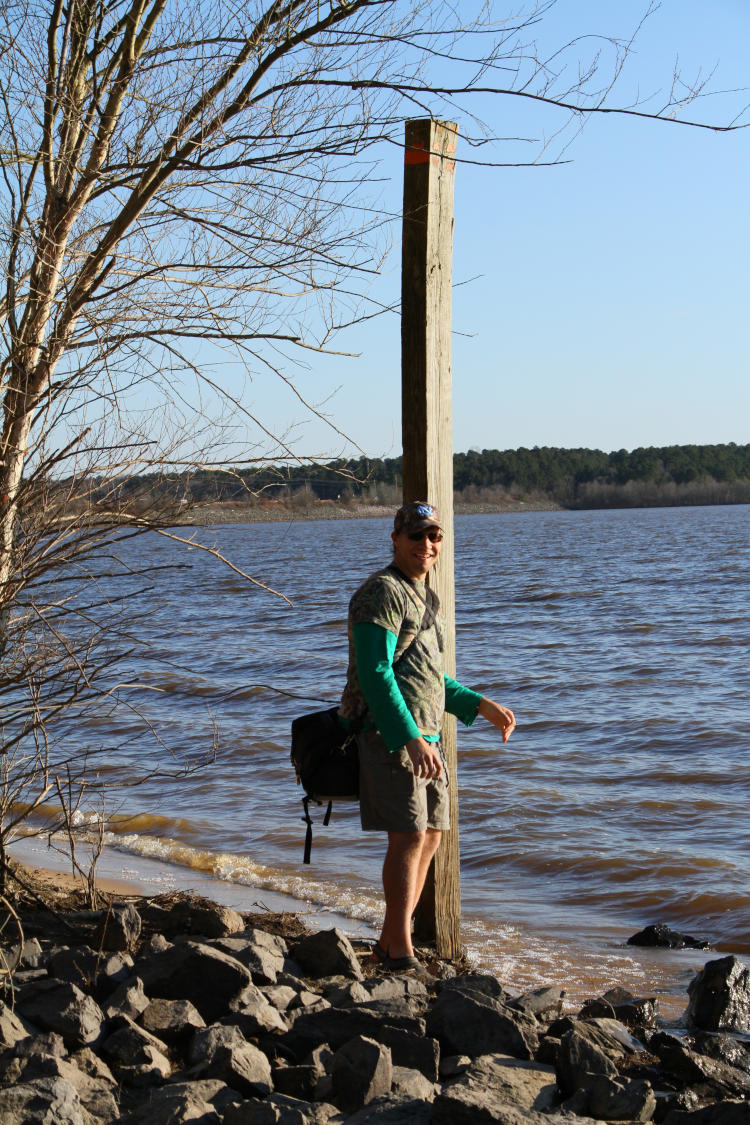
And now we have a shot from last February, when the water level was just a wee bit higher.
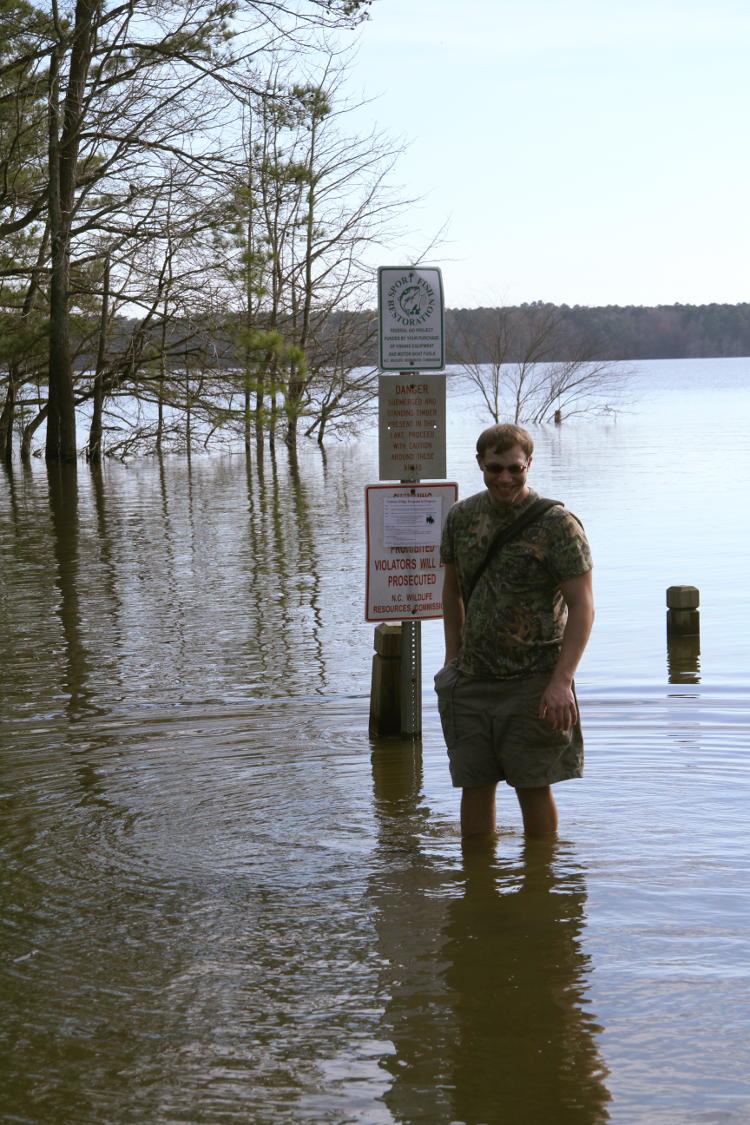
That same post is visible just to the right of Buggarino – no, the one up over his shoulder. Bugg stands about 183cm so this would put the lake level better than 3.5 meters higher back then, and Jordan is not a small lake – that’s a lot of damn water. We’ve seen our share of rain this year (the yard is finally not squishing like a sponge now,) but this was nothing compared to last year.
As we feared, sunset came around without a cloud in the sky, which really gives little to provide any color at all, so I just used the lake surface instead. Not that that improved things much.

Annnnndddd that was it, really – the barest hint of color appeared, but not even worth photographing. No sunset flocks or fish jumping, and the sailboat was now well down the lake. Ho hum.
But we hung out for another half hour, because there was an event that I was curious about capturing. The International Space Station is now quite large and reflects a lot of light, and it was due to break the horizon right after 6 PM and pass almost directly overhead – nowhere near the moon, which would have been fantastic, but I was curious to see if I could snag any detail with the 150-600 and 2X teleconverter.
As it was, the ISS wasn’t visible until it had risen significantly, and Buggato spotted it before I did since I was looking a little too low at the time. I had already used the moon to pin down tight focus and was ready with mirror lockup and the remote release, but what I wasn’t ready for was the speed that it was crossing the sky, leaving the viewfinder within seconds at that magnification. Nonetheless, I fired off several frames as I endeavored to keep it within sight. This is the full frame, showing how it appeared while tracking it.
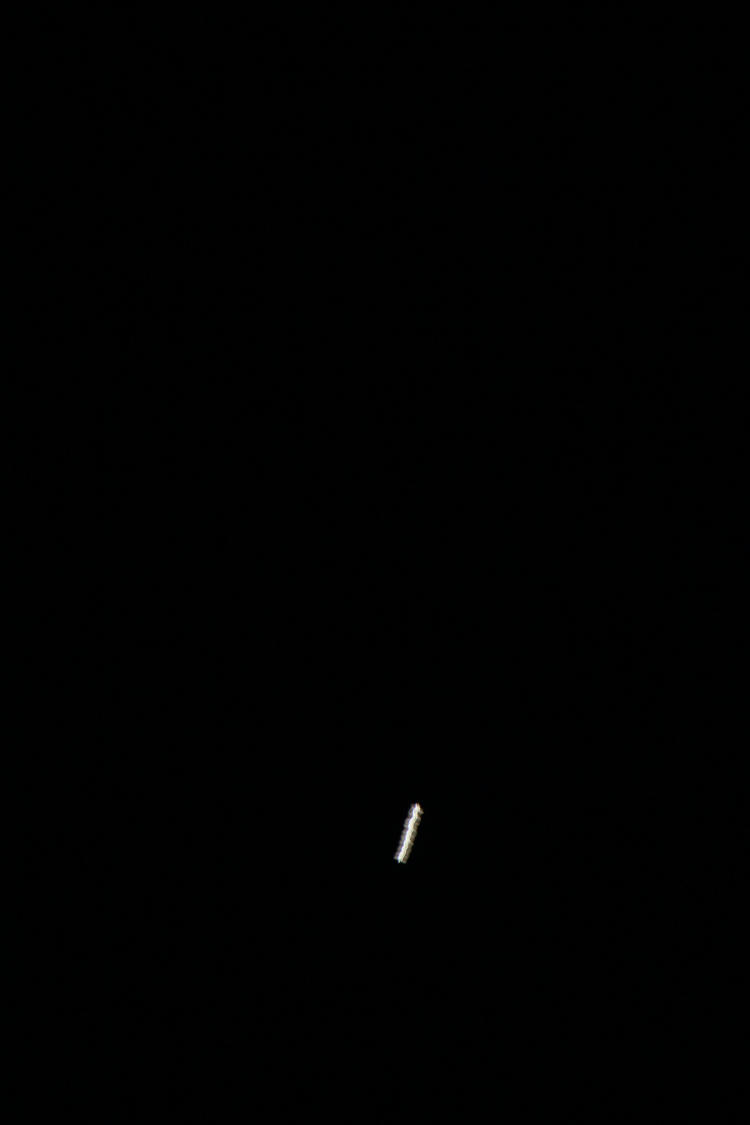
For the record, this is 1/10 second at f6.3 (though with the teleconverter that’s effectively f13,) ISO 800, and as you can see, nowhere near fast enough even though the exposure was acceptable. Let’s take a closer look.

Several things wrong here. I have other frames where the ISS wasn’t as elongated, so I suspect the lengthy blur is more due to tripod movement than the passage of the station itself, and I’m quite sure the squiggly bit is due to camera vibration – I really couldn’t wait out several seconds of mirror lock without the subject simply leaving the field of view. Yet, the stripes and ‘wings’ tell me that the structure of the station and the solar panels to either side can be made out at this magnification – as long as I could get the shutter speed short enough. And of course, have a stable camera position as it passed into view.
What this means is, either a really precise aim before it passes (highly unlikely given no way at all of aiming the camera within arc-second measurements,) or catching it as it passes in front of a known object – like the moon. Others have done this, so I know it’s possible, and the ability to silhouette the station against the sunlit moon could allow for a much shorter shutter speed, but from my previous experience, getting this alignment might still be hard. I’ll just have to keep trying.
But while I had the stuff all set up, I re-aimed at the moon for an updated image.

The exposure was a little high, but this helped accentuate a detail that I was pleased to get, so let’s go in a tad closer, full-resolution.
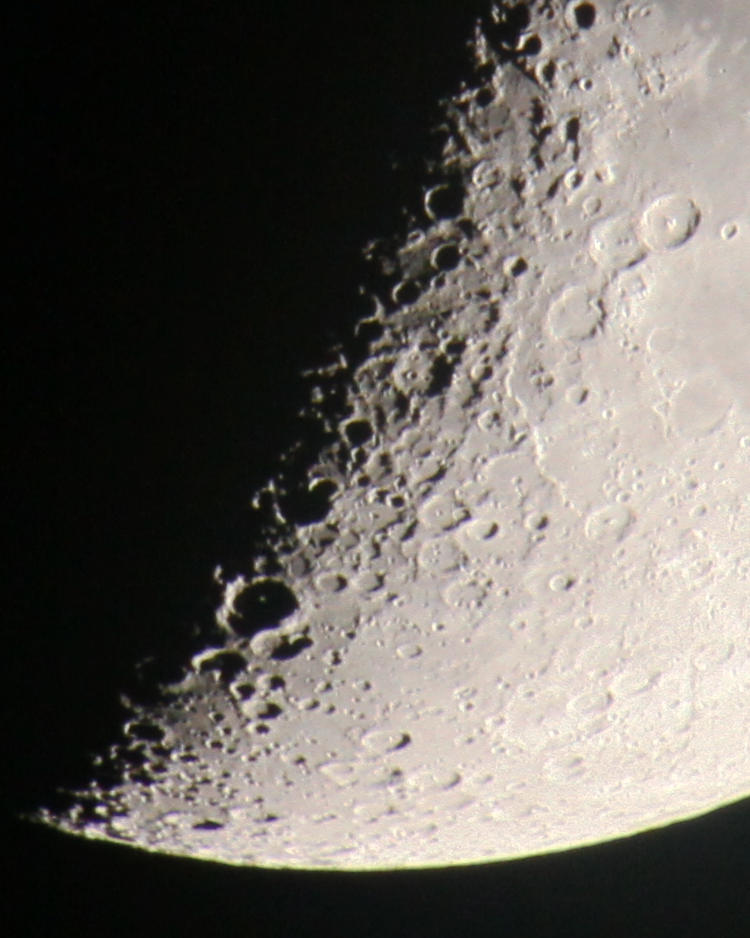
This is only a day after the frames in this post, so notice how Theophilus crater, towards the upper right corner, is now lit – and you can still discern the multiple summits of the central peak within it. Meanwhile, lower and at the terminator sits Maurolycus crater, with sunrise just hitting its own central peak. I consider this a lucky grab, because that peak is quite eroded now and not very distinct. Wouldn’t it be great to have the ISS pinned against this kind of detail? Yeah, well, we’ll just have to see how many factors are likely to work against this, but hey, I like a challenge.



















































